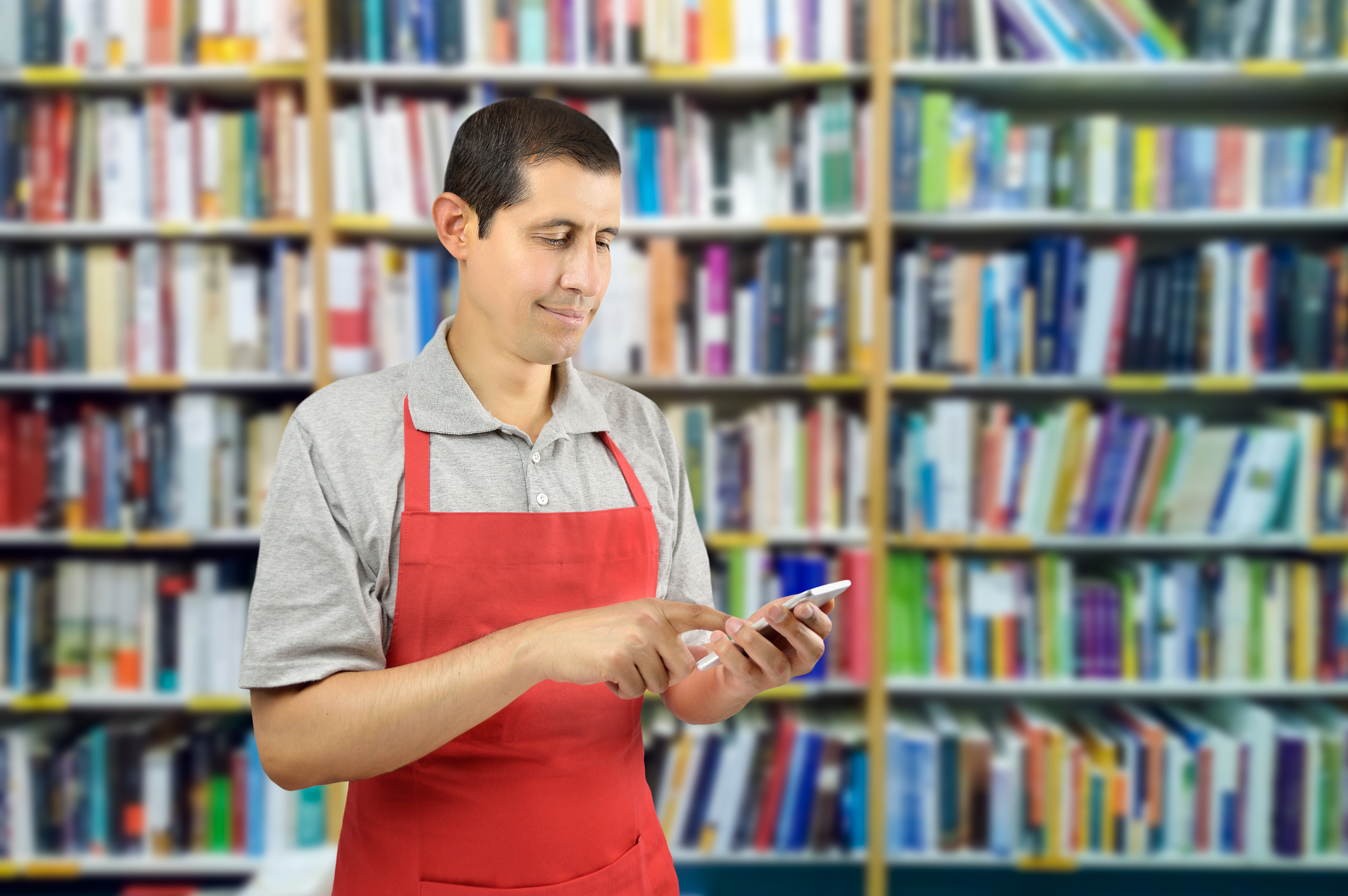
4 reasons why contextual learning is a retail training gamechanger
The last few months have been a spectacular test of resilience for retailers as they’ve adapted to COVID-19. For many, ecommerce exploded, curbside pick up was invented, and the list of sanitization and health and safety protocols to implement was long and changed often.
When we look at performance through that period, we see some retailers that changed very quickly, leading the industry. What lessons are in there for retail training? How are some retailers finding ways to equip their frontline workers to learn more efficiently during onboarding, reskilling and upskilling — so they not only survive, but thrive? Turnover in retail has always been high, which means training and learning are never-ending activities. It’s not just that retailers are hiring thousands of new workers all the time, however. Half of all employees globally will need reskilling or upskilling over the next three years to manage the way their job duties have changed, according to a World Economic Forum report.
Classroom-style retail training should be obsolete for frontline workers
The way retailers deliver training is getting overhauled — for good reason. While we used to think about learning as a destination a worker must reach, we now recognize the failures of status quo retail training. We know it’s much more about equipping them to consistently adapt over the course of their learning journey, which lasts as long as they are employed. On top of all that, employees entering the workforce are digital learners who consume information differently. New training methods must seek to accommodate these learners.
Embracing the future of retail training means letting go of the concept that a frontline workforce can acquire new capabilities via traditional training sessions once or twice a year, outside their physical work context.

The future of retail training is continuous task guidance delivered in the frontline employee’s context, which hinges on having access to a mobile workforce productivity platform that makes the delivery and personalization of content possible.
1. Contextual learning is different from traditional training
We all know what traditional training looks like: you fly in a corporate trainer or schedule a week-long Zoom orientation session for your new hires or workers transitioning to new roles. The trainer does an upfront knowledge dump for workers, followed by a training session in an LMS, away from the physical workplace.
But once they’re on the floor, workers realize they’ve retained very little of what they learned in their training because it wasn’t contextual to their working environment. And it could be weeks before the skills taught need to be put to use — either between store training on a new offering and when customer demand picks up, or between training on supply chain changes coming and when they are implemented. The non-retained knowledge negatively affects retailer productivity and worker job satisfaction.
When workers don’t know how to take the next right action to complete their task, they have to locate a supervisor or spend valuable time going through binders, training manuals and PDFs to find what they need. Despite all that money spent on classroom training, new employees get frustrated and may quit soon after they’ve been hired.
2. Micro-learning on its own is a start, but it usually doesn’t go far enough
Some retailers who’ve identified the inefficiencies in traditional classroom learning have begun taking their existing training materials and converting them into smaller, more digestible chunks that they put online in an LXP, LMS or a PDF. They’ve worked hard to condense long SOPs and training manuals, and have made the effort to keep these resources accessible to workers.
This is an improvement over traditional classroom learning, but unless those materials are consumed in the flow of work and in the context of a specific task, this type of learning is often still too difficult to access. Many microlearning tools still require workers to search out information (which they may not do), and there is no filtering or suggestion of information for their role, or position on the floor — all the context that can be used to keep them productive.
3. A move to focus on capabilities vs. skills for individual microlearning
To understand how contextual learning is the best way to deliver retail training, we must first distinguish between building skill sets and building capabilities. Any worker you hire will arrive with particular skill sets, which may or may not be applicable to their working environment. But to train an adaptive workforce that’s agile and productive, you need to instead focus on building the capabilities they need to perform their specific tasks. This is especially relevant for when you have workers absent and you need an employee to switch roles.
You don’t have time to train them on new skills, but you do need to build their capability to take on new tasks in the moment.
You build capabilities by offering workers microlearning opportunities in their flow of work, ideally from a mobile device in the physical place where they’ll be performing the work. There’s no need for employees to memorize anything in advance. They should receive contextualized task direction, via bite-size instructions or video on a mobile device so they can immediately practice the concept or direction they’ve been given.
This is particularly relevant for training that’s related to specific equipment or machinery. On-demand learning provides workers with the guidance they need to use what’s right in front of them instead of theoretical instructions about similar machinery as it appears in a training manual. Consuming bite-size content on the frontline equips an associate to apply those skills immediately.
The focus on capabilities creates a much stronger connection between workers who can effectively perform the right tasks and the effect that has on business outcomes.
4. Contextual learning that’s personalized will build an adaptive workforce
If you want to realize next generation productivity in retail, you need to build an adaptive workforce — one that doesn’t just adapt when forced, but is continually learning and flexible to change. To do that, you need not only easy-to-digest micro content, but contextualized learning that doesn’t require the worker to remember anything. Workers need the content to be located nearby so they can have immediate access to it — like on a mobile device.
To operate at the new, fast pace of modern retail, you need to equip workers with task guidance that’s contextualized to their role, location, time of day and skill level to keep them engaged in what they’re doing. Once workers are comfortable using their platform for contextual task guidance, learning leaders can use assessments within the technology solution to further personalize training and equip workers to do the right work.
Answers gathered via assessments and surveys completed by workers can help measure and tracker users’ learning progress and identify gaps. Retailers can use these insights to modify their training content and determine which videos and articles to push out to individual employees who need to focus on particular areas.
How Smart Access uses retail training to create adaptive workforces
Smart Access provides workers with personalized and contextual task guidance, which helps them learn on the frontline, adapt to shifting procedures, protocols and duties, and stay safe. Using our mobile workforce productivity platform, workers scan the Smart Access stickers placed strategically around their physical working environment with their mobile devices, which then triggers their contextualized task guidance.
Workers who are continuously learning are the key to building an adaptive workforce, boosting productivity and keeping workers safe. When training doesn’t provide associates with the policies, procedures and tools they need in their flow of work, it threatens the efficiency of the entire supply chain and the productivity of your workforce.
Here’s how contextual learning helps you and your workers on the floor or in the warehouse:
- Building an agile supply chain: Workers who are equipped to respond to shifting operating procedures and an increase in volume for online order fulfillment or returns will maximize the output of your supply chain.
- Communicating changes directly to the frontline: When a procedure or protocol shifts, due to COVID or any other reason, learning leaders can easily relay updates to the frontline, keeping workers on the floor instead of sending them back to the computer or backroom for training. Having the ability to rapidly create training content is key here.
- Recommending content based on data and context: The Smart Access platform detects a workers location and delivers task guidance right on the warehouse floor, and tailored to their role and competency.
- Onboarding better: Instead of multi-day upfront training that gets quickly forgotten, reduce traditional onboarding and equip workers with continuous task guidance that’s like a job shadow, so they don’t have to give up.
- Boosting productivity: With contextual task guidance in their hands tailored to location, and workers’ role and profile, workers are more productive and learn continuously without disruption.
Ready to see how contextual learning can transform your retail training? Get a Smart Access demo today.
Share: